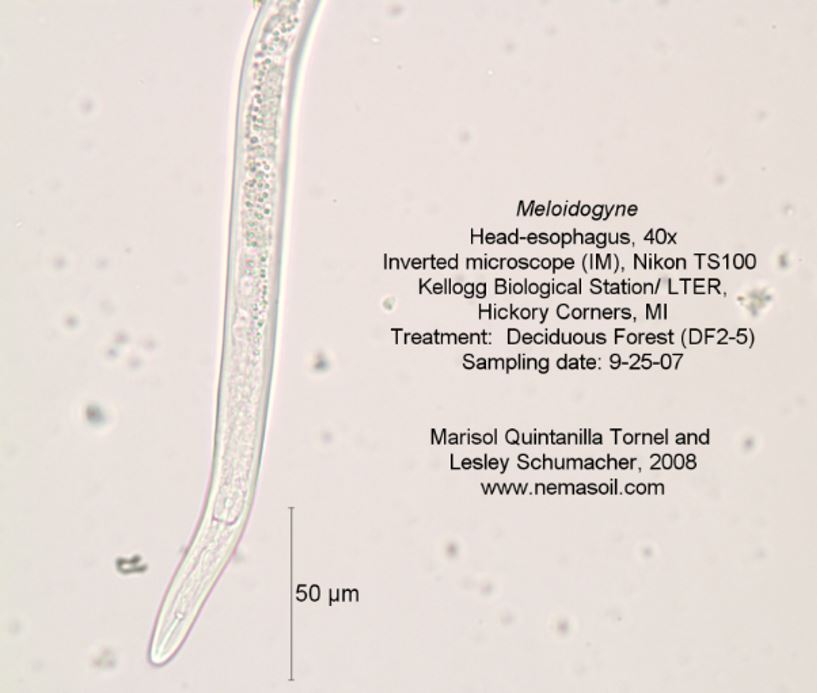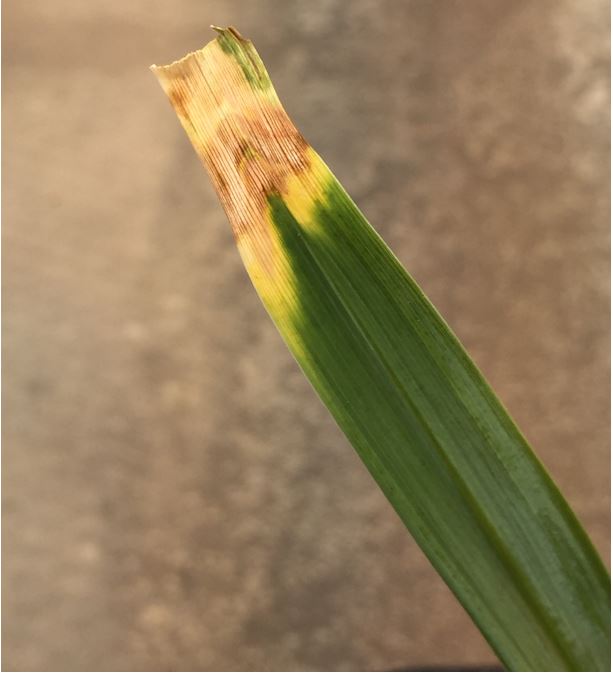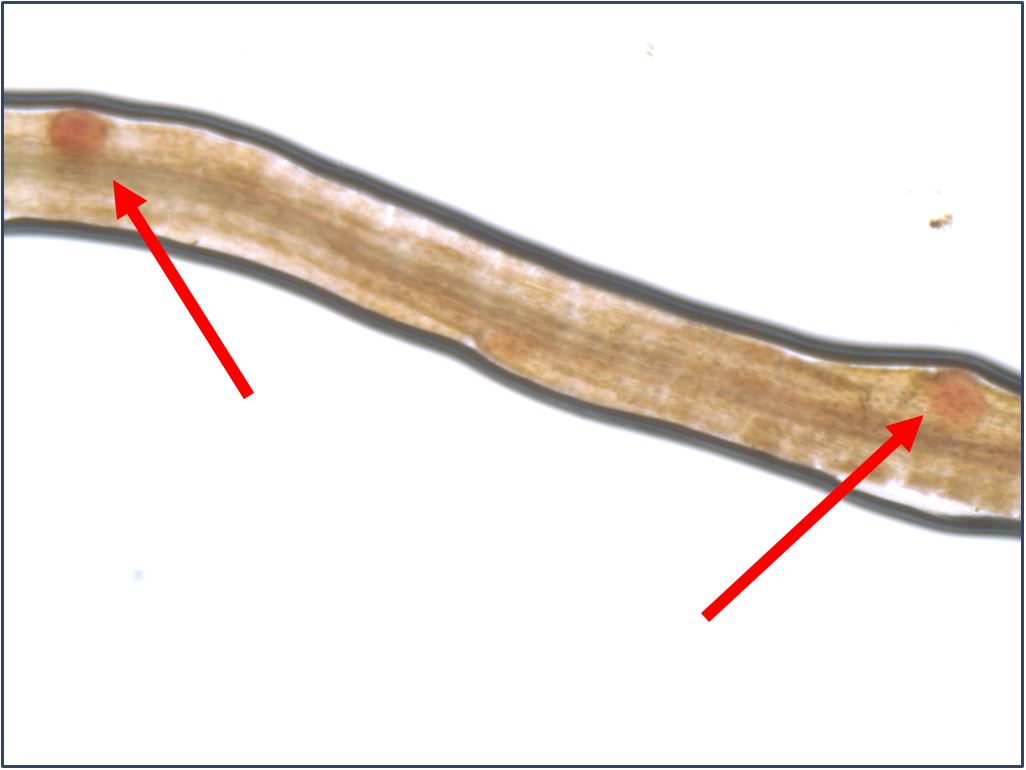Nematodes in ornamental plant production: Good or bad?
Some species of nematodes are an asset in reducing pest populations in greenhouse production while other species can cause plant stunting, reduced yields and marketability.

Did you know nematodes are the most abundant animals on earth? Nematodes are microscopic round worms that are extremely common in soils. There are over 25,000 species of nematodes, most of which are considered to be beneficial and feed on bacteria, fungi or insect larvae. The beneficial characteristics of one species of nematode, Steinernema feltiae, are even exploited in some commercial greenhouses in order to reduce pest populations (Fig. 1).
S. feltiae are entomopathogenic on western flower thrips larvae and fungus gnat larvae, which are two major greenhouse pests. Applying S. feltiae as a soil drench in the greenhouse reduces the populations of western flower thrips and fungus gnats in greenhouse crops. However, there are some nematodes that can also be considered harmful to ornamental crops, such as the northern root knot nematode, Meloidogyne hapla (Fig. 2).

Figure 2. Meloidogyne hapla is a pathogenic nematode of field-grown ornamental crops such as daylilies.
Northern root knot nematodes are herbivorous, parasitic nematodes that are a pest problem in outdoor crop production in the northern United States. They are able to overwinter despite harsh winter conditions. Northern root knot nematodes are a major pest of numerous vegetables such as carrots, celery, parsnips, etc., and perennial ornamentals such as daylilies (Hemerocallis) and hostas. In fact, growers are still routinely losing 20 percent of their crop to northern root knot nematodes.
Yield reductions are caused by nematodes feeding on roots of the host plants. The northern root knot female establishes a feeding site within the roots and becomes sedentary and obese as she feeds. When the root is transected and stained, the swollen female northern root knot nematodes are evident (Fig. 3). The feeding causes galls to form on the root and reduces the nutrients and water available to plants. Thus, the crop becomes stunted and is increasingly susceptible to root rot diseases. When selling bare-root perennials, the visible galls on the product directly reduces the marketability.
Figure 3. Swollen female northern root knot nematodes detected in roots eight weeks after treatment.
The life cycle of northern root knot nematodes is approximately one month long, therefore multiple generations per growing season should be anticipated. There are a few common methods of suppression including fumigation, crop rotation with non-hosts (monocots or grasses), hot water dips of transplants prior to planting, and nematicides. However, even the industry standard hot water dip in order to reduce northern root knot nematodes in the transplants causes tip burn on the leaves of the daylilies (Fig. 4).

Figure 4. Damage to daylily leaf typically observed after the standar¬d hot water dipping procedure.
Unfortunately, in addition to damaging the plant material while trying to eliminate the pathogenic nematodes, there is not currently a way to completely eradicate northern root knot nematodes. In Part 2 of this article, “Combating root-knot nematodes in daylilies: Experimental results,” we will discuss current research efforts by Marisol Quintanilla and Kristin Poley, Michigan State University Department of Entomology, to reduce the numbers of northern root knot nematodes and improve yields of field-grown daylilies in Michigan.



 Print
Print Email
Email


